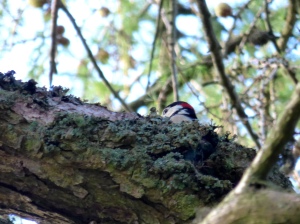A little bird said …
This week I had the almighty pleasure and joy of taking over the Biotweeps account. This Twitter account is curated by a different biologist each week, who discusses their research, knowledge and interests. From a cursory glance over the contributors, the majority are in academia, but I queried whether a naturalist could curate for a week – with an affirmative answer!
During the week I wanted to cover a variety of things across two topics: people and nature, and pure wildlife. One of my regrets is not setting aside enough time to plan thoroughly and thus fit more in. Nonetheless I fit in a fair amount:
- twitching and panspecieslisting
- mental health and nature
- young people and nature (including A Focus On Nature of course)
- wildlife recording
- getting a career in conservation
- mammals of the UK
- moths
- butterfly identification
- photos from scotland / south africa
You can see a selection of my tweets in the images below.
As I began my tweeting, I made sure to venture out into the sunny garden in Cambridge a couple of times, spotting a couple of different insects about, although the Old Lady moth (Mormo maura) had been caught in Matt’s moth trap. I’m not sure how clear it is in the photo – but the wasp is eating a fly caught in a spider’s web!
On the way back to Dorset from Cambridge, I popped into my parents’ house in north London where I was promptly distracted by a jam doughnut, plus a Hornet hoverfly (Volucella zonaria), a Large White butterfly (Pieris brassicae) and a dead bumblebee in the garden.
In work this week, there was a lot of sitting inside working away at various tasks, but I managed to get out for a couple of walks and see some wildlife – including a Wasp Spider (Argiope bruennichi) in a field that hasn’t got any records for them as far as I know! I attempted to do a bit of moth trapping at Lorton for Moth Night – but caught mainly Hornets (Vespa crabro), so I gave up after a little bit. Luckily the hornets weren’t in stinging mode so I was able to get them out of the trap without getting hurt myself! However, I did find a few moths, albeit not in the trap itself!
The postings on this site are my own and don’t necessarily represent Dorset Wildlife Trust’s positions, strategies or opinions (or any other organisation or individuals for that matter).



































































































































































































